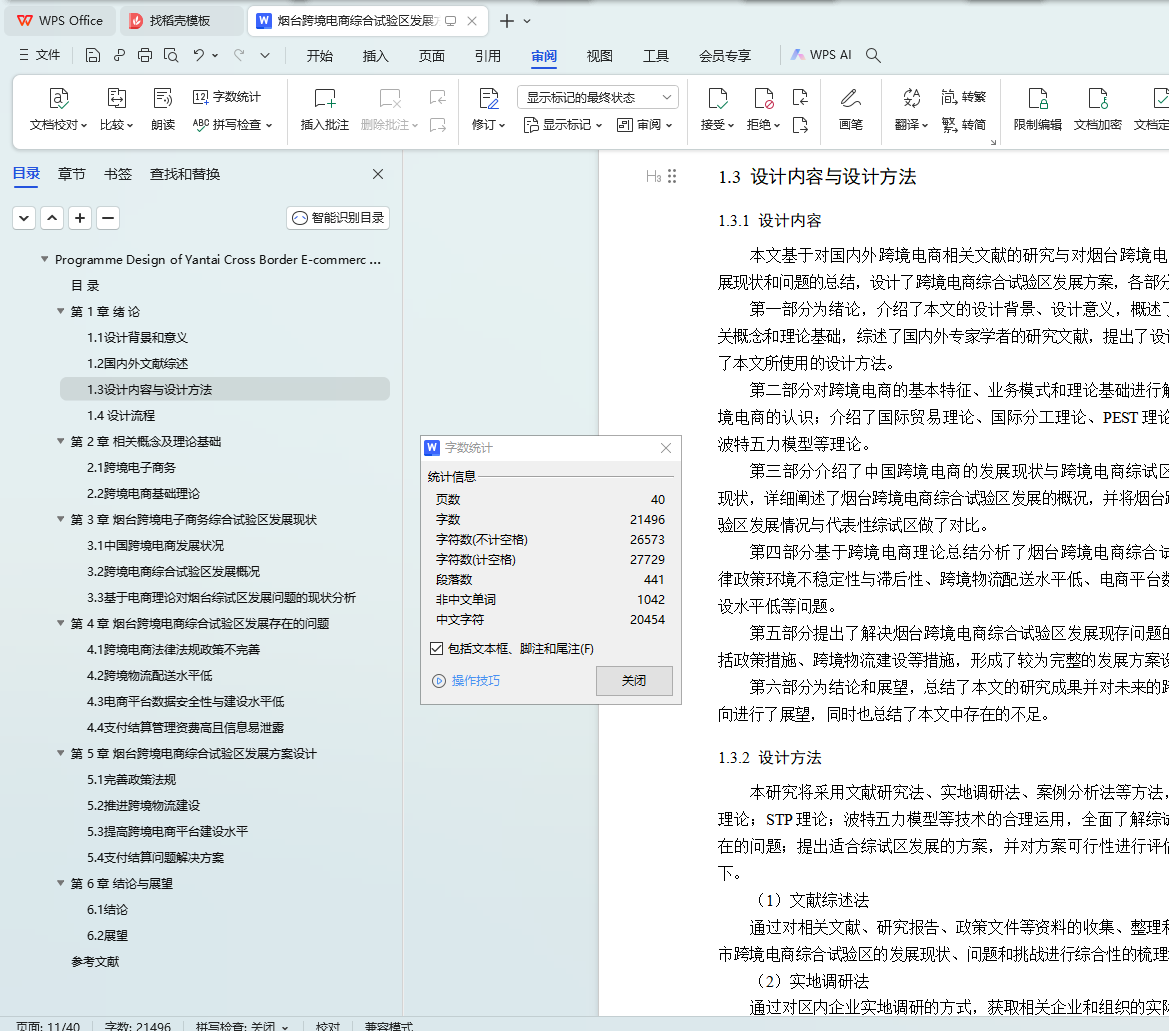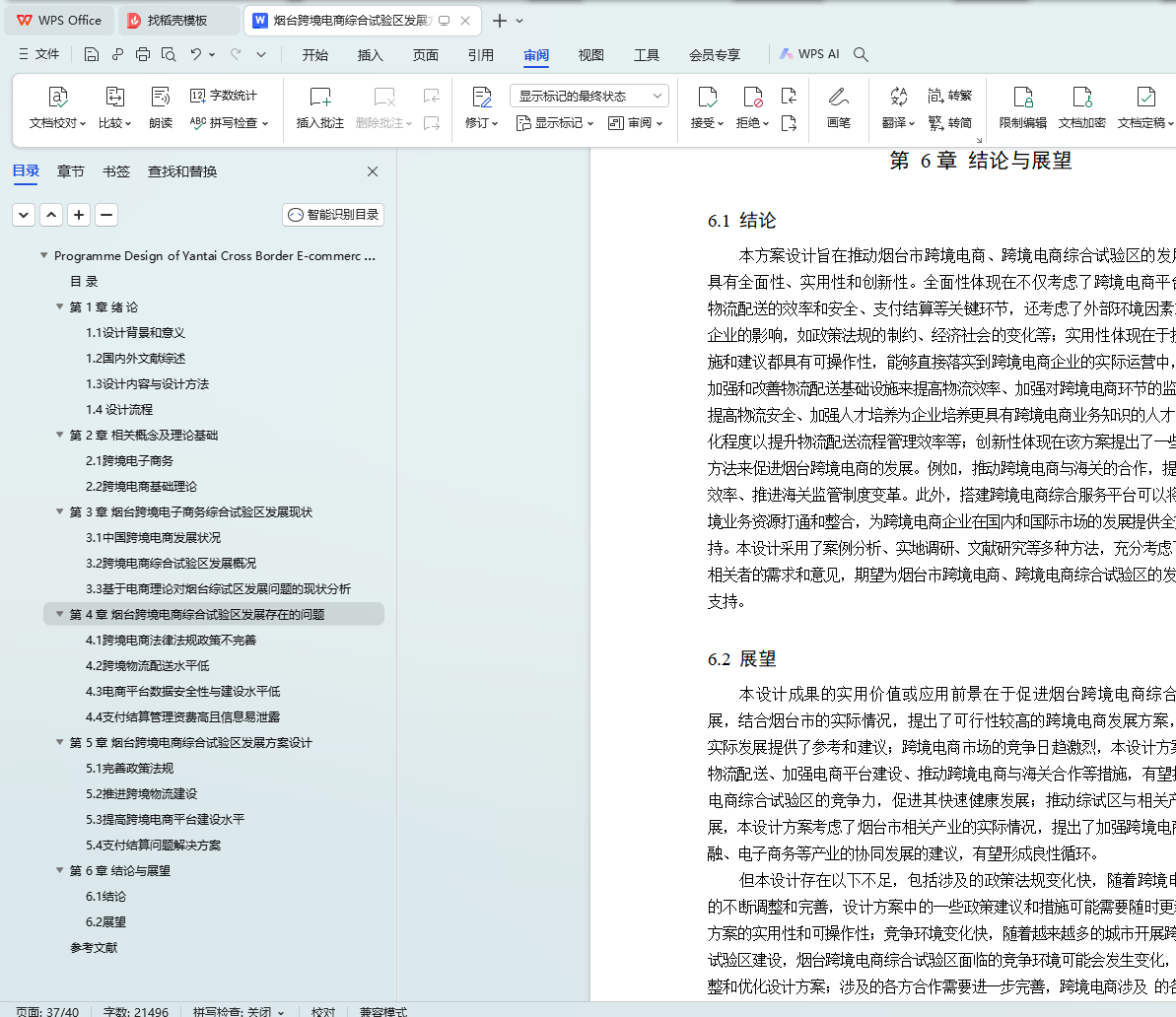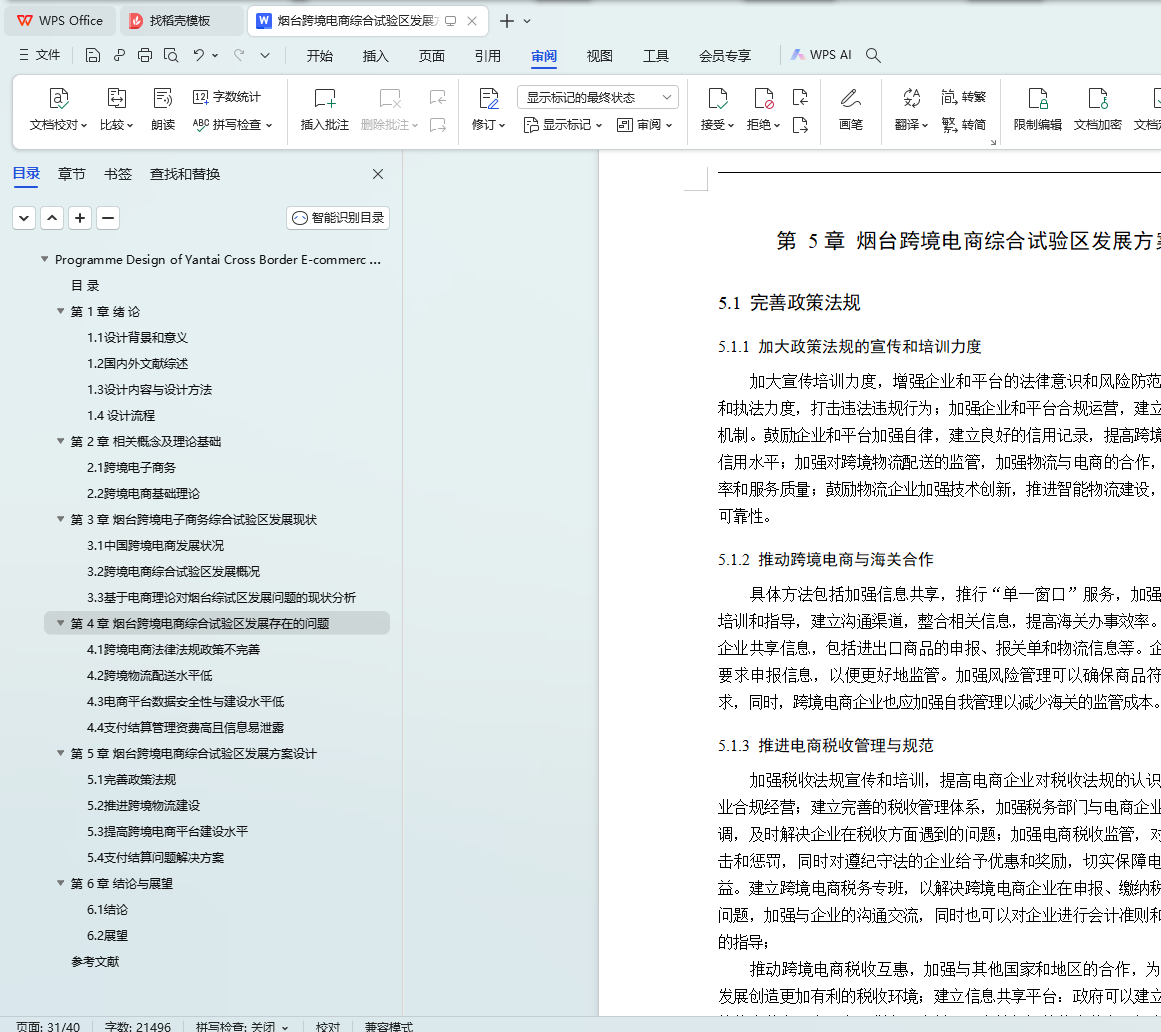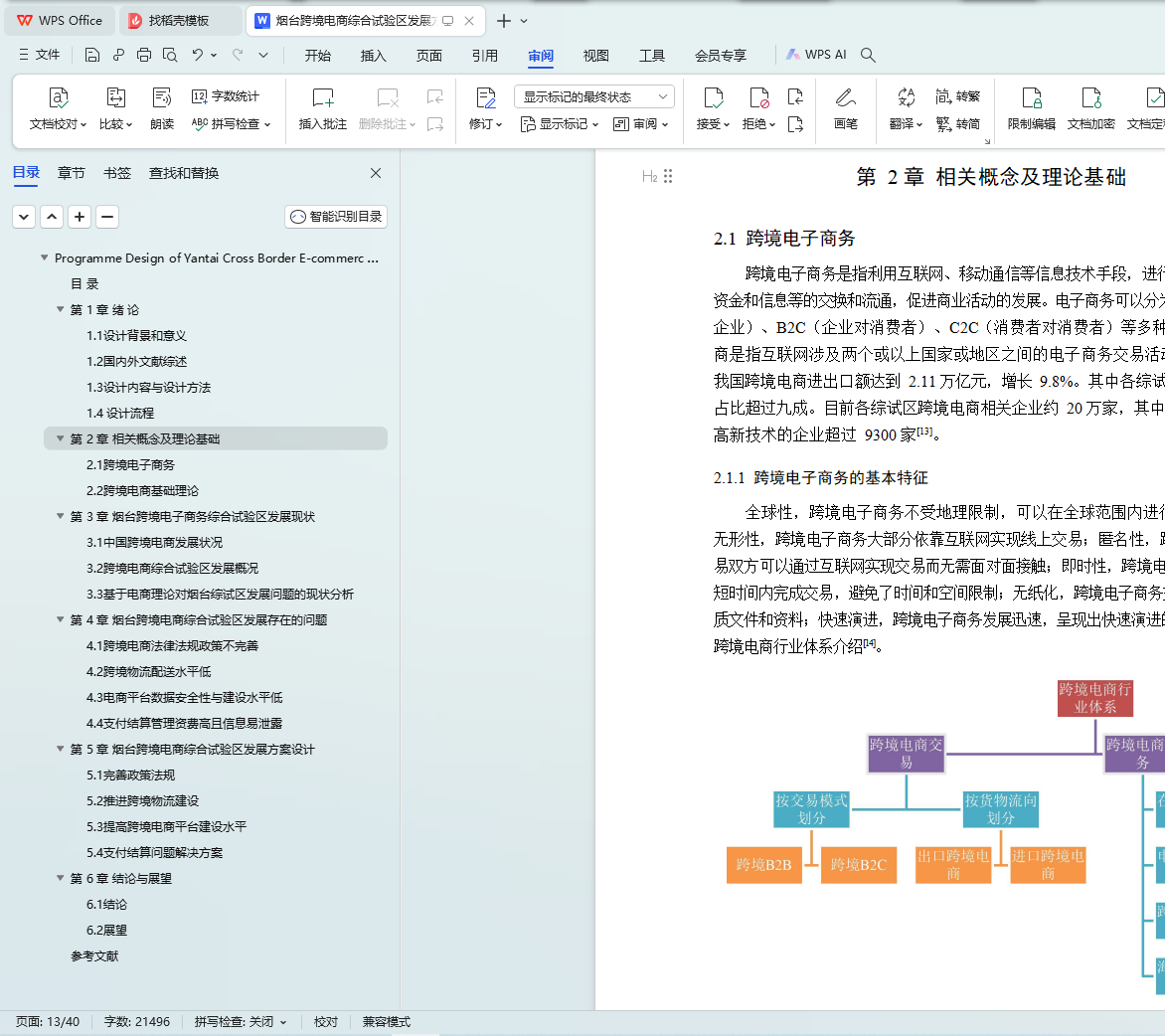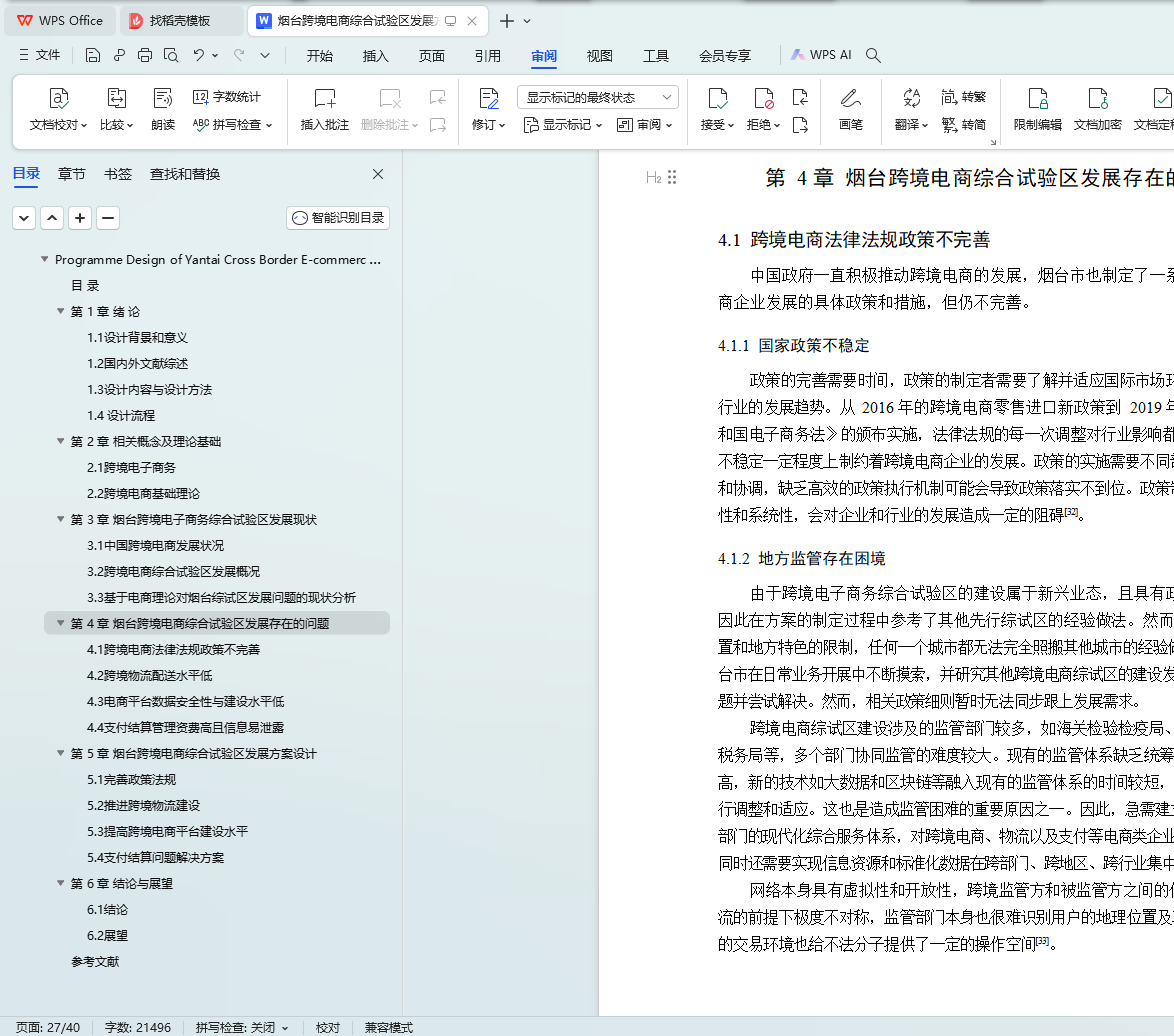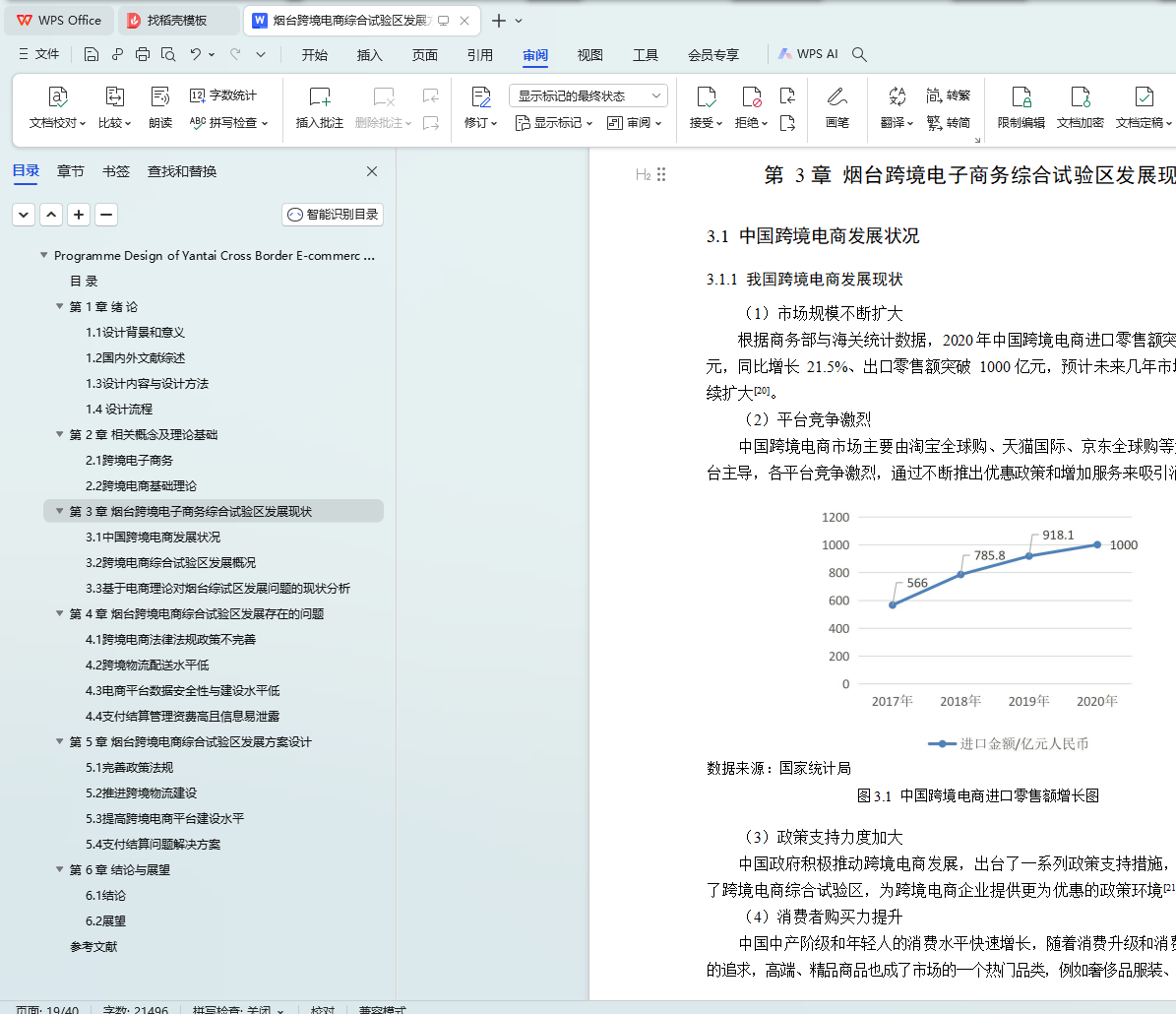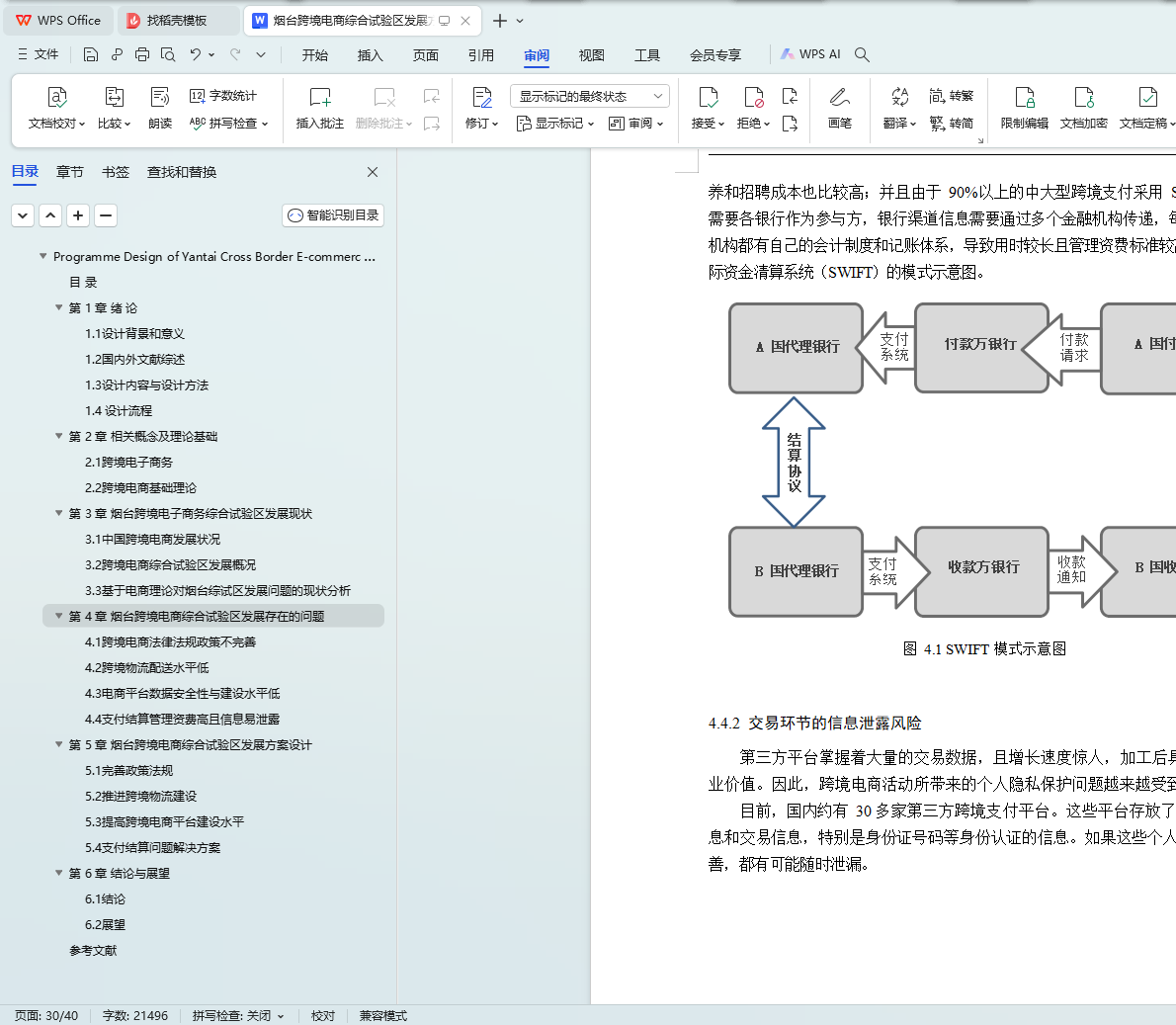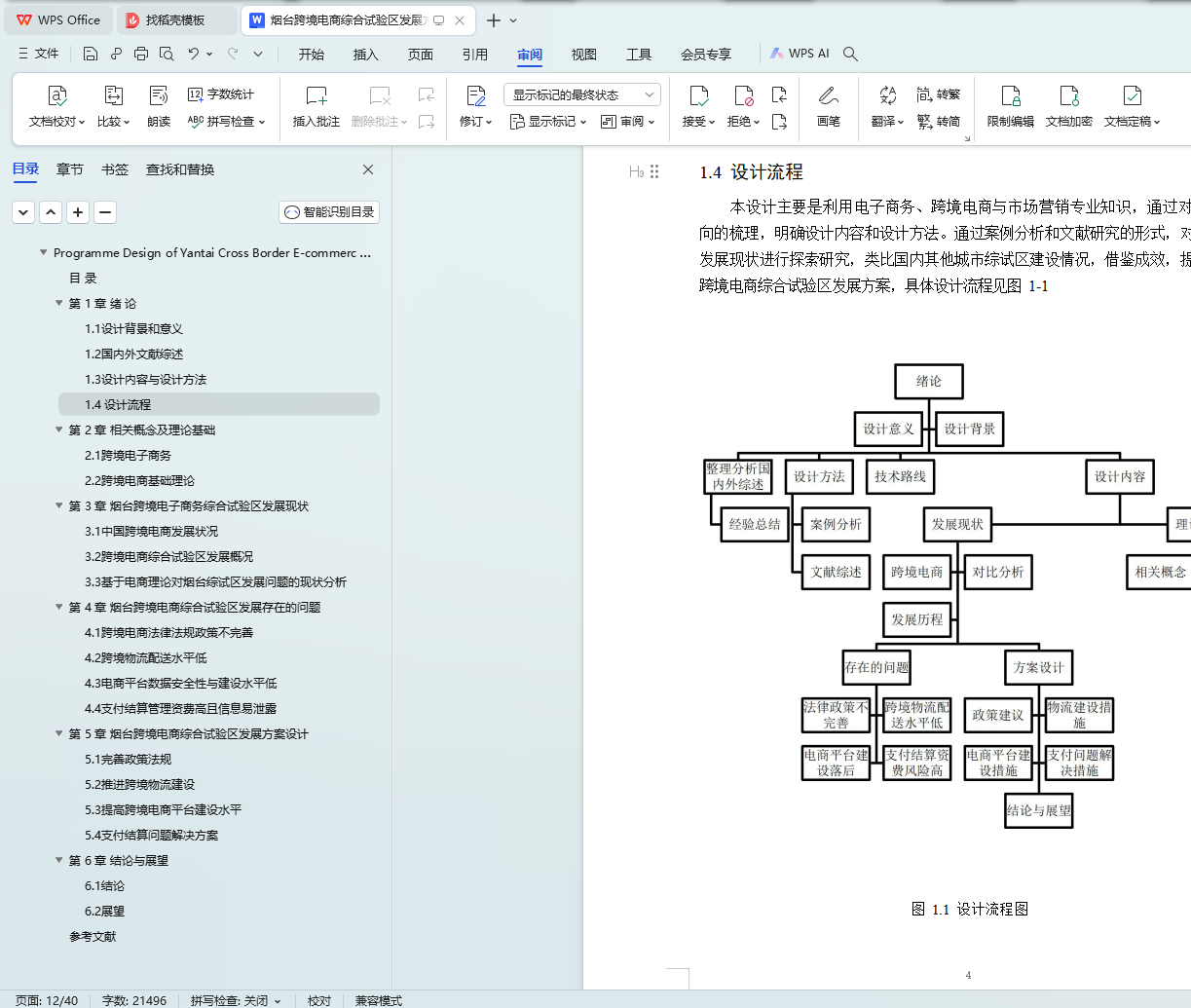摘 要
随着中国经济的迅速发展,跨境电商行业飞速成长,我国作为世界上最大的电商市场,跨境电商的快速发展给我国经济带来了巨大的贡献。为了更好地推进跨境电商的发展,全国多地区积极出台了跨境电商产业的发展战略规划。烟台跨境电子商务综合试验区自 2019 年成立以来便受到烟台市政府、商务局等政府部门的高度重视。但目前,烟台跨境电商综合试验区面临着一些问题和挑战,如外贸环境和国际市场波动性较大、本地跨境电商企业的规模和实力相对较小,品牌影响力不足、技术创新程度低;同时,对于平台运营以及海外物流方面的掌控也存在局限。因此,本文旨在为烟台跨境电商综合试验区的发展设计一份切实可行的方案,以解决该区域跨境电商发展面临的问题和挑战。
但烟台市跨境电商的发展也面临着法律法规政策不完善、物流配送水平低、平台建设落后、信息易泄露等问题。本设计采用了文献研究法、实地调研法、案例分析法等方法,通过 PEST 理论、STP 理论、波特五力模型等技术,全面了解烟台跨境电商综合试验区的现状和存在的问题,提出了适合烟台跨境电商综合试验区发展的方案,并对方案的可行性进行评估。
本设计充分结合电子商务专业背景,借助电子商务平台收集相关数据和信息, 从政策法规、物流配送、电商平台建设、支付结算和税收管理等方面对烟台跨境 电商综合试验区的现状和问题进行了深入分析。在此基础上,提出了以加大政策 宣传力度、仓储物流智能化、推进电商平台采用多元化业务模式、完善跨境支付 体系为主要内容的发展建议和对策,旨在为烟台跨境电商综合试验区的发展提供 参考和借鉴。
关键词:烟台市;跨境电商综合试验区;发展方案;产业结构
Programme Design of Yantai Cross Border E-commerce Comprehensive Pilot Area’s Development
Abstract
With the rapid development of the Chinese economy, the cross-border e-commerce industry has grown rapidly. As the world's largest e-commerce market, the rapid development of cross-border e-commerce has made a huge contribution to China's economy. In order to better promote the development of cross-border e-commerce, many regions across the country have actively introduced strategies and plans for the development of the cross-border e-commerce industry. Since its establishment in 2019, the Yantai Cross-border E-commerce Comprehensive Pilot Area has received high attention from the Yantai municipal government, commerce bureau, and other government departments. However, the Yantai Cross-border E-commerce Comprehensive Pilot Area currently faces some problems and challenges, such as the large fluctuations in the external trade environment and international market, the relatively small scale and strength of local cross-border e-commerce enterprises, insufficient brand influence, and low level of technological innovation. At the same time, there are also limitations in platform operation and overseas logistics control. Therefore, this article aims to design a practical and feasible plan for the development of the Yantai Cross-border E-commerce Comprehensive Pilot Area to solve the problems and challenges faced by the development of cross-border e-commerce in the region.
However, the development of cross-border e-commerce in Yantai also faces problems such as imperfect laws and regulations, low level of logistics and distribution, backward platform construction, and easy information leakage. This design adopts methods such as literature research, field research, and case analysis, and uses technologies such as PEST theory, STP theory, Porter's Five Forces model, etc., to comprehensively understand the current situation and existing problems of the Yantai Cross-border E-commerce Comprehensive Pilot Area, propose a development plan suitable for the development of the Yantai Cross-border E-commerce Comprehensive Pilot Area, and evaluate the feasibility of the plan.
This design fully combines the professional background of e-commerce, collects relevant data and information through e-commerce platforms, and conducts in-depth analysis of the current situation and problems of the Yantai Comprehensive Pilot Area for Cross-border E-commerce from the aspects of policy and regulation, logistics and distribution, e-commerce platform construction, payment settlement, and tax management. Based on this, development suggestions and countermeasures are proposed, including increasing policy promotion efforts, intelligent warehousing and logistics, promoting the adoption of diversified business models by e-commerce platforms, and improving the cross-border payment system. The aim is to provide reference and guidance for the development of the Yantai Comprehensive Pilot Area for Cross-border E-commerce.
Keywords: Yantai;Cross-border e-commerce comprehensive pilot area;Development pro gramme;Industrial structure
目 录
第 1 章 绪 论 1
1.1 设计背景和意义 1
1.1.1 设计背景 1
1.1.2 设计意义 1
1.2 国内外文献综述 1
1.2.1 国外文献综述 1
1.2.2 国内文献综述 2
1.3 设计内容与设计方法 3
1.3.1 设计内容 3
1.3.2 设计方法 3
1.4 技术路线 4
第 2 章 相关概念及理论基础 5
2.1 跨境电子商务 5
2.1.1 跨境电子商务的基本特征 5
2.1.2 跨境电子商务的业务模式 6
2.1.3 中国跨境电商发展历程 6
2.2 跨境电商基础理论 6
2.2.1 国际贸易理论 7
2.2.2 国际分工理论 7
2.2.3 PEST 理论 7
2.2.4 STP 理论 8
2.2.5 波特五力模型 8
第 3 章 烟台跨境电子商务综合试验区发展现状 11
3.1 中国跨境电商发展状况 11
3.1.1 我国跨境电商发展现状 11
3.1.2 烟台市跨境电商发展现状 13
3.2 跨境电商综合试验区发展概况 14
3.2.1 中国跨境电子商务综合试验区 14
3.2.2 烟台跨境电子商务综合试验区概况 15
3.2.3 代表性跨境电商综合试验区的发展情况对比 16
3.3 基于电商理论对烟台综试区发展问题的现状分析 17
3.3.1 STP 理论对烟台综试区发展问题进行分析 17
3.3.2 波特五力模型对烟台综试区发展问题进行分析 17
3.3.3 PEST 理论对烟台综试区进行宏观环境分析 18
第 4 章 烟台跨境电商综合试验区发展存在的问题 19
4.1 跨境电商法律法规政策不完善 19
4.1.1 国家政策不稳定 19
4.1.2 地方监管存在困境 19
4.2 跨境物流配送水平低 20
4.2.1 物流效率与安全性低 20
4.2.2 跨境物流人才短缺与信息化水平低 20
4.3 电商平台数据安全性与建设水平低 20
4.3.1 数据易泄露 21
4.3.2 平台建设水平落后 21
4.4 支付结算管理资费高且信息易泄露 21
4.4.1 管理资费标准高 21
4.4.2 交易环节的信息泄露风险 22
第 5 章 烟台跨境电商综合试验区发展方案设计 23
5.1 完善政策法规 23
5.1.1 加大政策法规的宣传和培训力度 23
5.1.2 推动跨境电商与海关合作 23
5.1.3 推进电商税收管理与规范 23
5.2 推进跨境物流建设 24
5.2.1 加大基础设施建设力度 24
5.2.2 仓储物流智能化 24
5.2.3 安全保障与人才培养 24
5.3 提高跨境电商平台建设水平 25
5.3.1 采用多元化的业务模式 25
5.3.2 合理应用互联网与人工智能技术 26
5.3.3 服务升级与贸易便利化 26
5.4 支付结算问题解决方案 27
5.4.1 推进大型电商平台垄断化 27
5.4.2 推动金融机构积极参与跨境电商支付结算 27
5.4.3 完善跨境支付体系 27
第 6 章 结论与展望 29
6.1 结论 29
6.2 展望 29
参考文献 31
致 谢 33
